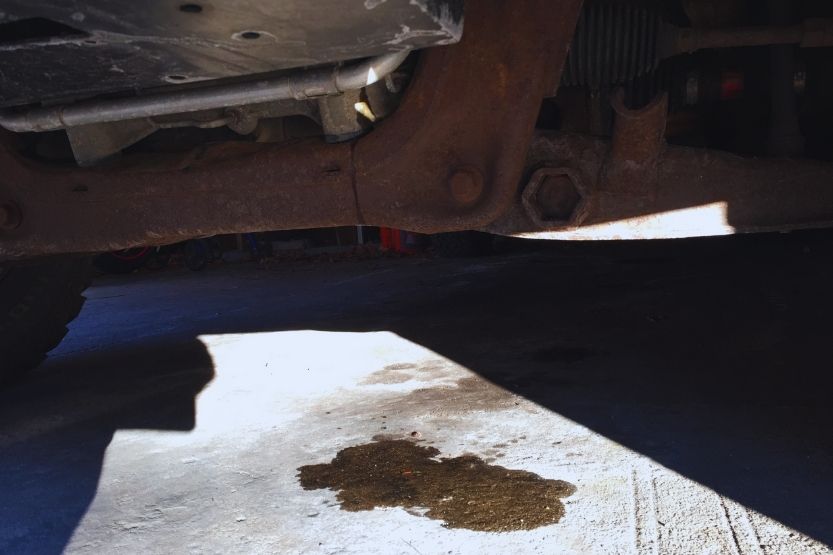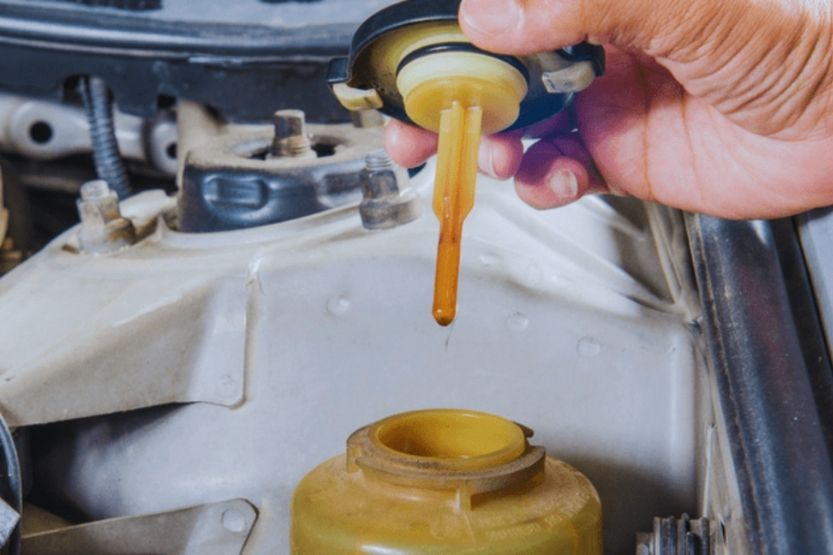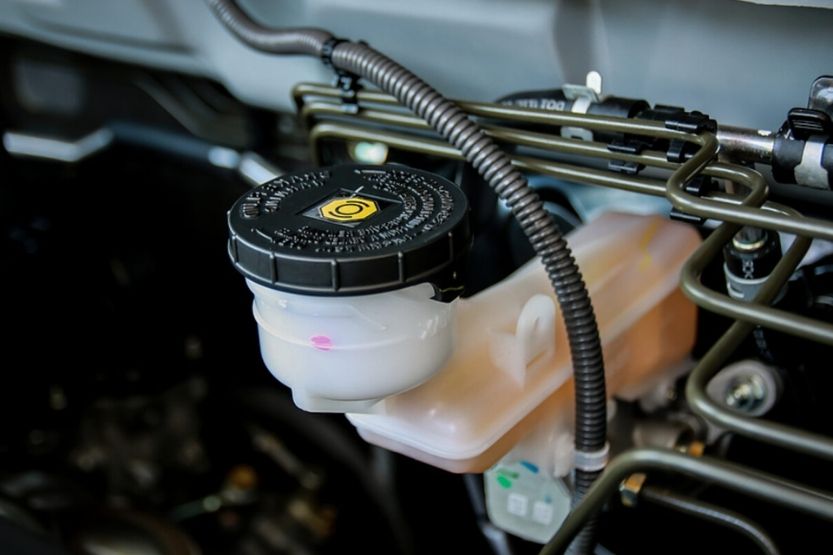The right fluids at the right levels are crucial for the optimal performance of any vehicle. One of the most important is the power steering fluid. Over time, however, power steering fluid can leak. To prevent this and compromise power, you should know its causes and fixes.
5 of the most common power steering fluid leak causes include the following:
- Using the wrong fluid
- Damage in the power steering hose
- Leak in the power steering pump
- Steering gear housing problem
- Faulty hydro-boost brakes
It is important to act when your vehicle has a power steering fluid leak. Solutions to this issue include repairing the power pump, replacing the power steering fluid, and using a stop leak agent.
Read on to learn more about the causes of a power steering fluid leak causes and how to stop the leak.
Power Steering Fluid Leak Causes

To avoid power steering fluid leak and implement the best solution possible, you must know its causes. Below are some of the potential reasons:
1. Using the Wrong Fluid
One of the most common causes of power fluid leaks is the fluid itself, especially if you are misusing it. You can choose from different types from various brands, but they are not all the same. Consider the type of car and steering system as you decide the best fluid to use for the power steering.
When you use the wrong fluid, it will increase the possibility of leaking. It can be too thick or thin, failing to deliver the anticipated benefits. Additionally, the fluid may lack the crucial additives that can prevent wear.
Types of Power Steering Fluid:
- Automatic Transmission Fluid: Some power steering systems are compatible with automatic transmission fluid. This is common in old vehicles, especially those made from the 1970s to the 1990s. Some of the most popular options are Mercon, Dexron, and Type F.
- Synthetic Power Steering Fluid: It is a high-performance fluid common in cars from Europe and Japan. It is created in a laboratory and is non-oil-based. These fluids flow well, even in extremely low temperatures. Most newer cars will require synthetic power steering fluid.
- Universal Power Steering Fluid: While it is less common, some manufacturers suggest using this fluid with a little special additive. The latter helps improve lubrication and enhance protection against corrosion.
2. Damage in the Power Steering Hose
Two Main Parts of Power Steering Hose:
- High-pressure Hose with Reinforced Synthetic Materials and Double-flared Fittings: It can withstand extreme temperatures of up to 270°F and 1,500 psi.
- Low-pressure or Return Hose: It transports oil to the reservoir and pump. It will not carry fluids under extreme conditions. With such, it is not built to be as sturdy as the high-pressure hose.
Over time, both power steering hoses are susceptible to damage, resulting in leaks. Here are the parts of the hose that also wear over time:
- O-rings
- Valves
- Gaskets
Some of the causes of damaged hoses include the following:
- Thermal fatigue
- Corrosion
- Heat
- Humidity
They demonstrate decreased performance after the car runs for 100,000 miles.
3. Leak in the Power Steering Pump
Another critical component of the power steering system is a pump. It has hydraulics that pushes fluids into the gearbox. It assists in turning the wheels, making sure that it is smooth. The pump can have problems with regular use, eventually leading to a power steering fluid leak.
As the power pump works, it creates pressure. When the pressure is high, the pump can break. The gasket can also loosen, which is what will cause the leak. The seal around the shaft is also prone to tear, which will cause leaks.
4. Steering Gear Housing Problem
It is almost impossible to turn your vehicle when there is no steering gearbox. It has gears for the transmission of the steering inputs, which are necessary for turning. Most will exist in the form of a rack and pinion setup.
Like the other steering system components, the gearbox has seals that ensure the proper flow of liquids. Nonetheless, the seal weakens over time, which allows the fluid to flow out of the steering system. The latter can be due to regular wear and exposure to harsh environmental elements that weaken the seals.
5. Faulty Hydro-Boost Brakes
A hydro-boost brake helps in improving the performance of a vehicle’s power steering system. It was introduced in the 1980s to solve old cars’ fuel inefficiency and safety issues. It supplements the input of the driver. Once it becomes faulty, other problems will be apparent, including power steering fluid leak.
What Is Power Steering Fluid?

Power Steering Fluid Leak Color
Power steering fluid is usually red or pink. So if you see a red or pink puddle below your car, it is likely the power steering fluid. This red or pink color distinguishes them from other fluids in the vehicle.
Vital in Peak Performance of Various Components
The power steering fluid is a hydraulic fluid for optimal power transfer. It ensures smooth steering of your car with no or minimal effort. It is vital in the peak performance of different components, including the following:
- Power steering pump
- Valves
- Pistons
- Hoses
Aside from lubrication, power steering fluids also suppress foam and minimize corrosion.
Symptoms of a Power Steering Fluid Leak
Aside from knowing the causes of power fluid steering leaks, you should also know the various signs and symptoms:
1. Low Steering Fluid Level
The most obvious is a low steering fluid level. The reservoir will have a fluid level indicator. If the fluid level is too low, it is a sign that there is a leak, especially if you just refilled it recently.
2. Squealing Noise
A squealing noise is another potential sign that the power steering fluid is leaking. The louder the noise, the more serious the problem is. There is probably an issue with the fluid and the steering system itself.
3. Poor Steering
Poor steering is another sign to watch out for. If you’re having a hard time turning the wheels, the power steering fluid can be leaking. As it leaks, it prevents the smooth movement of the steering components.
Again, what are the causes of power steering fluid leak? The common causes of power steering fluid leak include utilizing the wrong fluid, power steering hose damage, power steering pump leak, a problem with steering gear house, and malfunctioning hydro-boost brakes.
How to Fix a Power Steering Fluid Leak?
Most people will immediately run to a local mechanic to solve a leak in the power steering. While such is a practical solution, it may not always be the best. You can fix the issue yourself with little knowledge and effort, which is also a great way to save money from costly repairs:
1. Act Quickly
Time is of the essence, so act as soon as the problem is apparent. The longer you wait, the worse it will be. In turn, the consequences will be more serious and costlier to address. Regularly check the fluid level, so you can intervene when necessary.
2. Repair the Power Pump
Inspect to See Any Sign of Damage
As we have noted earlier, the power steering pump is one of the culprits, and hence, it is amongst the first things you should fix. Inspect it closely to see any sign of damage. At times, a repair is adequate. In some situations, however, it might warrant a replacement.
Tighten the Nuts and Replace the Valves
The pump itself may not always be the problem. Instead, it can be the various crucial components for its functioning. Tighten the nuts and replace the valves. The hoses that connect the pump to the other parts may also need fixes.
3. Refill the Power Steering Fluid
Check the Power Steering Fluid Level
Another simple solution is to look at the power steering fluid and determine if it is already at a low level. You can also consider the car’s mileage to see if you already need a refill. As soon as it is down, change the fluid. To learn about different power steering fluids, see the following power steering fluid reviews: GM fluid, Nissan fluid, and Toyota fluid.
Check the User Manual
Start by checking the user manual. Follow the manufacturer’s recommendations regarding how often you should replace the fluid. Jack the car and find the reservoir. Use a hose to siphon the remaining fluid and replace it until the max fill line or when it is full.
4. Use a Stop Leak Agent
Designed to Stop the Power Steering from Leaking
Several products can help to stop a leaking power steering fluid. Among others, one of the most effective is a stop leak. As the name implies, the latter is a fluid designed to stop the power steering from leaking. It is an additive that you will mix with the power steering fluid. It will improve performance, keep you safe, and prevent costly repairs.
Stop Leak Agent Made from Synthetic Oil
The best option for a stop leak agent is made of synthetic oil. It has a lower viscosity, which is also what promotes smoother movements. As a result, it minimizes friction, which also lessens wear. Plus, it contains additives, which effectively reduce rust and corrosion.
5. Change Your Driving Behavior
The last fix we’ll talk about concerns your driving behavior. Often, a power steering leak happens when you turn the wheels to the right or left. This will push the power steering system to its limits, increasing the possibility of wear when the wheels reach the stopper and back it off instead of turning all the way.
Power Steering Fluid Leak – Frequently Asked Questions

Now that we talked about the causes and fixes for power steering fluid leaks, here are other essential things you need to know:
How Long Does Power Steering Fluid Last?
On average, power steering fluid will last anywhere from 30,000 to 100,000 miles or within two to five years. It will depend on many factors, such as the extent of the usage and the recommendations from the manufacturer. The best thing to do is inspect the reservoir periodically to know if it needs a replacement.
How Long Can You Drive With a Low Power Steering Fluid?
You can only drive a few miles when the power steering fluid is low. Otherwise, you risk more serious damage, which will also be costlier to fix. It will put unnecessary strain on the components, breaking the pump and other parts.
Can You Drive If the Car Has Low Power Steering Fluid?
Technically, yes, you can still drive even when a vehicle has low power steering fluid. Nonetheless, it should only be at a short distance. Otherwise, you’ll have a hard time turning the wheels, compromising safety and performance. Additionally, it can also damage various components.
Conclusion – Causes of a Power Steering Fluid Leak
Turning your vehicle smoothly and with minimal effort requires the peak condition of its different components, including the power steering. Power steering needs to have the right fluid at the right level. Over time, it can leak, which can be a result of the following:
- Wrong fluid
- Damage in the power steering hose
- Leak in the power steering pump
- Steering gear housing problem
- Faulty hydro-boost brakes
When you notice that the power steering fluid is leaking, act immediately. You might need to repair or replace some parts, including the power steering pump. Refilling the power steering fluid and adding a stop leak agent can also help. Not to mention, you must also prevent turning the wheels too much.
Related reading:


![Read more about the article Who Makes Supertech Oil? [Walmart Supertech Synthetic Oil]](https://roadsumo.com/wp-content/uploads/2021/06/who-makes-supertech-oil-300x200.jpg)
![Read more about the article Is Shell Gas Good for Your Vehicle? [Shell Gas Review]](https://roadsumo.com/wp-content/uploads/2022/03/is-Shell-gas-good-for-your-vehicle-300x200.jpg)